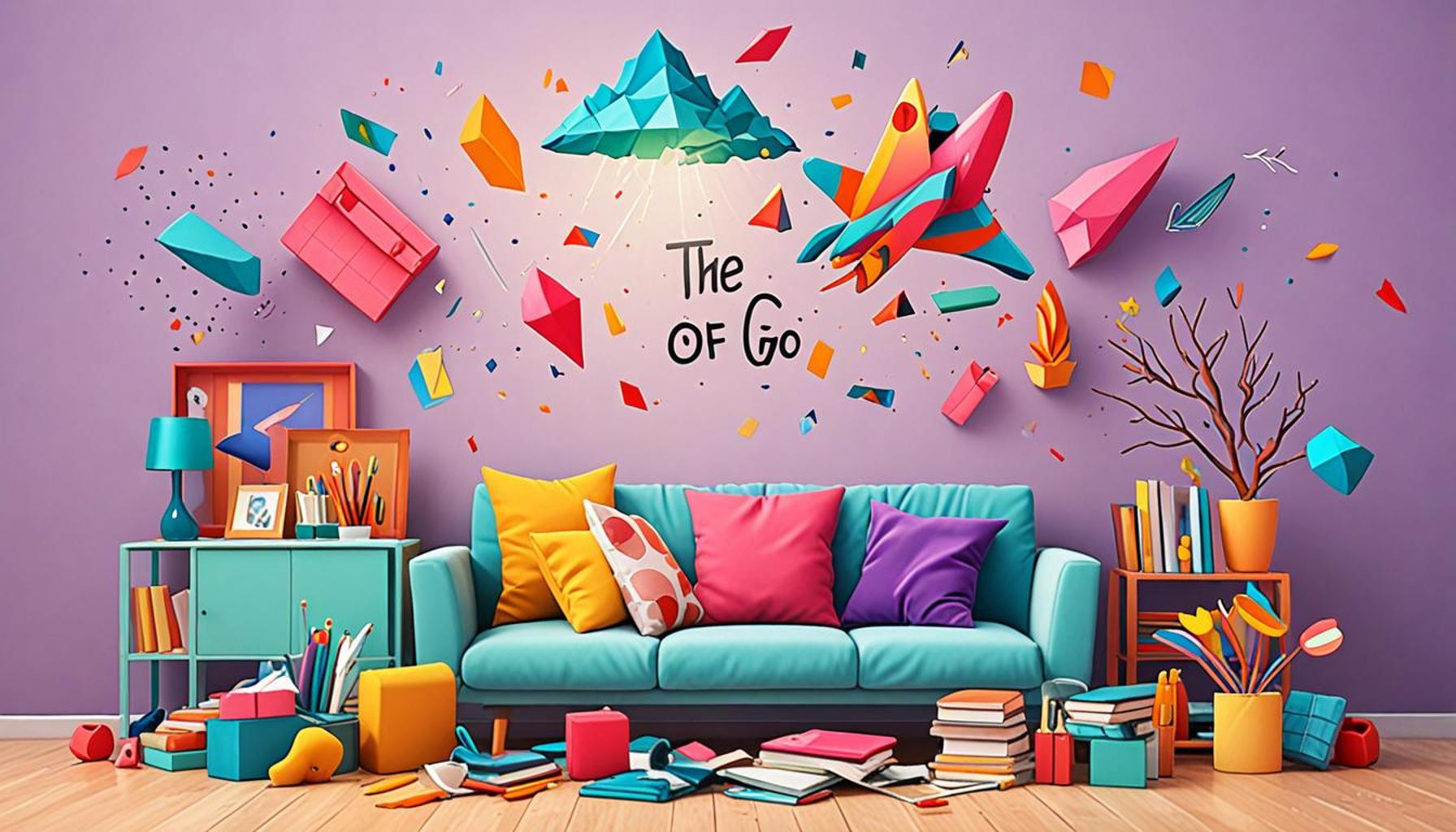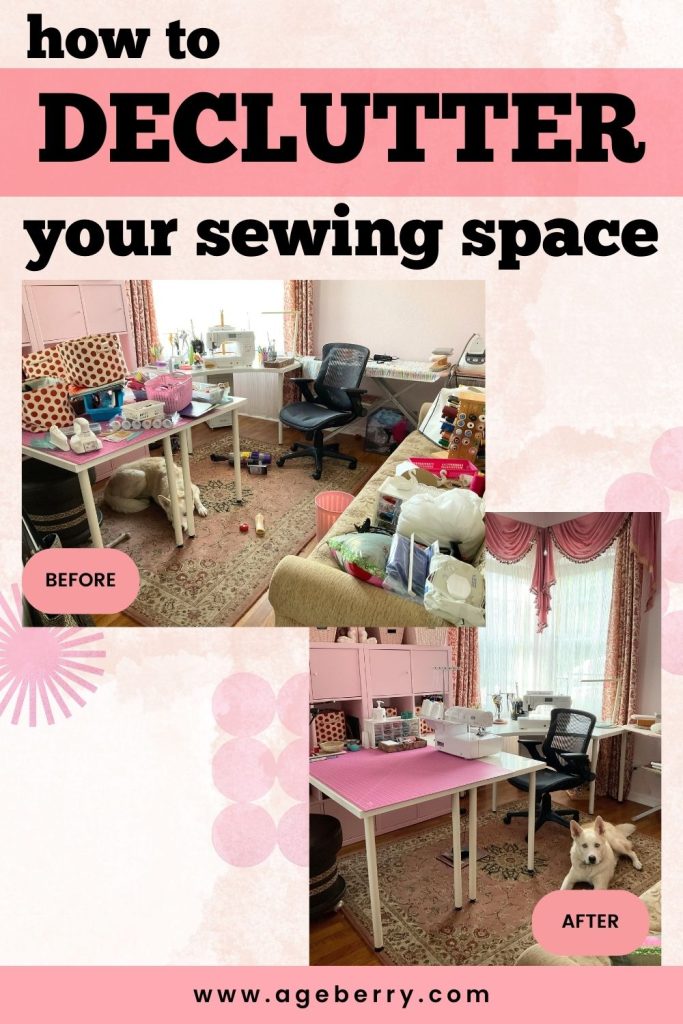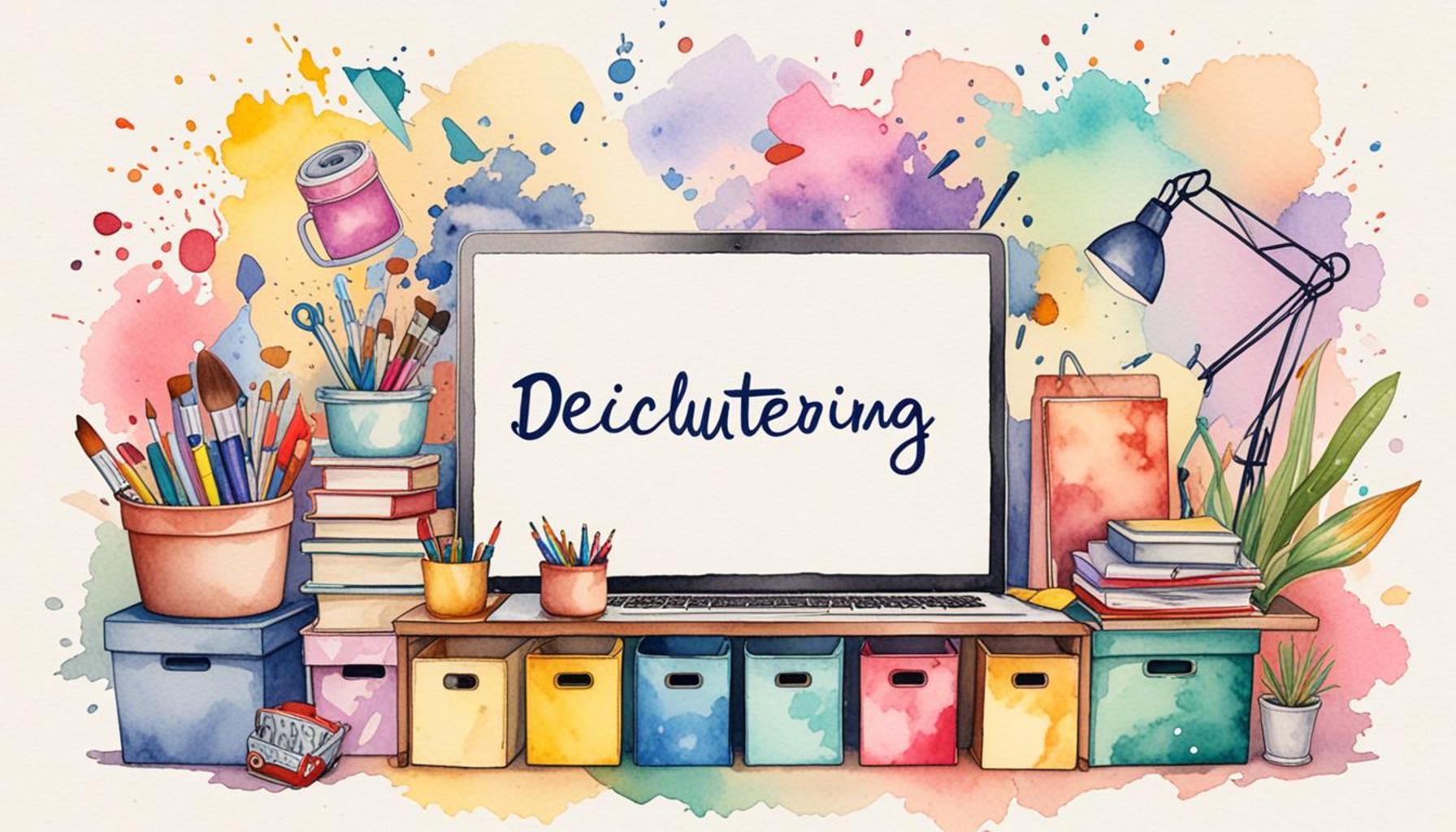The Art of Letting Go: Decluttering Techniques to Transform Your Space

Transforming Your Environment: The Power of Decluttering
In an age where consumerism reigns, many individuals find themselves grappling with an overwhelming buildup of possessions. These items may range from sentimental keepsakes to outdated gadgets, cluttering our living spaces and muddying our mental landscapes. Engaging in the art of letting go is not just about simplifying our homes; it is about embarking on a profound journey towards personal freedom and clarity.
As we navigate this decluttering process, the following benefits often emerge:
- Enhanced mental clarity: A clutter-free environment can significantly improve our psychological state. With fewer visual distractions, our minds can focus more on what truly matters, enabling clearer thought processes and effective decision-making.
- Increased productivity: When working in a tidy space, individuals tend to experience improved productivity. Research indicates that organized settings help reduce stress, allowing for heightened concentration on tasks. This boost in productivity can be particularly beneficial for those working from home or managing small businesses.
- Boosted creativity: A clean and organized environment does not just clear the mind; it can also ignite creativity. Artists, writers, and thinkers often find inspiration in simplicity, suggesting that a less cluttered space can lead to greater innovative output.
To initiate the decluttering process, consider incorporating effective decluttering techniques. Here are a few widely respected methods:
- The 30-Day Rule: This method encourages gradual decluttering by letting go of one item on the first day, two on the second, and continuing this pattern throughout the month. By day 30, you will have purged 465 items, a transition that feels manageable instead of overwhelming.
- Four-Box Method: This practical strategy involves designating four boxes labeled for keeping, donating, tossing, or relocating items. By categorizing possessions, you can make more deliberate decisions about what serves a purpose in your life and what doesn’t.
- The Marie Kondo Method: Popularized by the hit Netflix series, this method encourages individuals to keep only those items that “spark joy.” By focusing on emotional resonance with belongings, many find it easier to let go of the past and embrace the present.
Participating in these decluttering strategies can significantly enhance your living environment, but the benefits extend beyond just the physical space. They can lead to a greater understanding of your values and priorities, promoting a more intentional lifestyle. As you embark on this transformative journey, remember that every small step towards decluttering can contribute to an overall sense of freedom and empowerment.

Join us as we dive deeper into this incredible process of letting go, exploring its multifaceted benefits for both your living environment and your overall well-being. The journey to a simpler life starts with just one item—why not begin today?
DISCOVER MORE: Click here to enhance your workspace efficiency
Effective Strategies for Decluttering
As you embark on the journey of decluttering, the path to a transformed living space may seem daunting, yet it is essential to approach this task with a structured mindset. Adopting effective decluttering techniques can help streamline the process, making it not only manageable but also rewarding. Below, we delve into several tried-and-true strategies that cater to different lifestyles and preferences.
The Minimalist Approach
The minimalist movement emphasizes the importance of simplicity and intentional living. By embracing minimalism, individuals are encouraged to critically assess what items genuinely add value to their lives. Adopting this mindset may lead you to ask questions such as: “Does this item serve a purpose?” or “Does this bring me joy?” Thus, before making a decision, consider the function and emotional significance of each possession. This approach can help reduce the emotional burden attached to material items.
The 90/90 Rule
Another powerful strategy is known as the 90/90 Rule, which is particularly helpful for those who find themselves hanging onto items “just in case.” This method encourages individuals to evaluate the last 90 days in their life concerning any item they possess. If you haven’t used it or needed it in that time frame—and you don’t foresee needing it in the next 90 days—consider letting it go. Implementing this rule allows you to shift your focus from what could be to what actively serves your present life.
Visualization Techniques
Visualization can be an inspiring technique to aid decluttering. Imagine how a uncluttered space will feel and appear, fostering a sense of tranquility. You might choose to create a mood board with images that portray how you envision your ideal space—for instance, open shelving, organized drawers, or clean countertops. Keeping this vision at the forefront of your mind can motivate you to stay on track as you sort through your belongings.
Set Clear Goals
Creating specific decluttering goals can provide clarity and direction in your efforts. Consider breaking down the task into manageable projects, such as focusing on one room at a time or dedicating a specific timeframe each week for decluttering. Set deadlines that suit your lifestyle, and aim to complete particular tasks—like clearing out a closet or organizing a garage—in a set time frame. This structured approach can make the overall process less overwhelming.
- Designate Specific Areas: Tackle one area at a time, such as your bedroom or basement.
- Schedule Decluttering Sessions: Set aside a few hours weekly to focus solely on decluttering.
- Reward Yourself: After reaching each decluttering goal, treat yourself to something small, reinforcing your progress.
By implementing these decluttering strategies, you can take measurable steps toward a more organized and harmonious living space. With each item removed, you create a more inviting atmosphere, rooted in intention and mindfulness. Effectively letting go is about more than merely tidying up; it is about fostering a lifestyle imbued with purpose and clarity.
The Art of Letting Go: Decluttering Techniques to Transform Your Space
When it comes to decluttering, understanding the why behind the process can significantly enhance your motivation. The act of letting go of items that no longer serve a purpose allows for a greater sense of clarity and peace in your environment. Embracing this philosophy can lead not just to a transformed space but also a transformed mindset.One of the most effective techniques to initiate this transformation is the KonMari Method, developed by Marie Kondo. This method encourages individuals to evaluate possessions based on whether they “spark joy.” By focusing on what to keep rather than what to discard, you create an intentional space that reflects your values and aspirations. It’s a tactic that opens the door to a lighter, more positive living atmosphere.Incorporating a consistent schedule for decluttering is another essential technique. Setting aside dedicated time each week to reassess your items reduces the feeling of being overwhelmed. Break down your space into manageable sections, starting with the easiest areas, to build momentum. Moreover, understanding the psychological benefits is key. Research indicates that a decluttered environment can lead to reduced stress and anxiety levels. The physical act of letting go can be cathartic, providing room for new opportunities and experiences.Integrating storage solutions such as boxes and baskets is pivotal in maintaining your decluttered space. Organizing remaining items in an aesthetically pleasing manner not only keeps your space orderly but also enhances your overall enjoyment of your surroundings.As you dive deeper into this journey, remember that the art of letting go is not just about discarding the physical. It’s an invitation to release emotional baggage and outdated beliefs, paving the way for a brighter, more focused lifestyle. Embrace these techniques, and you may find that your expert skill in decluttering transcends beyond your physical space, inspiring change in various aspects of your life.
| Technique | Benefits |
|---|---|
| KonMari Method | Helps you focus on items that spark joy, fostering a positive environment. |
| Scheduled Decluttering | Reduces overwhelm and builds momentum through consistent effort. |
| Organizational Solutions | Creates aesthetic order, enhancing enjoyment of your space. |
DISCOVER MORE: Click here to learn about digital minimalism
The Emotional Aspect of Decluttering
When delving into the art of letting go, it is essential to acknowledge the emotional connections we often form with our belongings. Decluttering is not merely a physical endeavor, but also a psychological one. Understanding how emotions intertwine with our possessions can lead to a more profound transformation of our space.
Recognizing Emotional Attachments
Many individuals find it challenging to part with items due to sentimental value. This could be a childhood toy, a gifted piece of jewelry, or clothing from a significant event. However, it’s crucial to recognize that the memories associated with these items do not reside within the objects themselves. Instead, consider taking a photograph of the item or writing about its significance, allowing you to preserve the memories while freeing up physical space.
Embrace the Letting Go Process
Letting go can be a deeply transformative experience. One technique to facilitate this journey is the Joyful Goodbye method, where you actively express gratitude for each item before parting with it. By acknowledging its role in your life and thanking it for the service it provided, you create a sense of closure. This practice not only eases the guilt associated with letting go but also reinforces the notion of moving forward and making room for new experiences.
Community Contribution
Another empowering way to declutter is by donating items to charity or local organizations, which can provide a sense of purpose and fulfillment. Not only does this contribute to the well-being of your community, but it can also help mend the emotional ties to the items you no longer wish to keep. Items that may hold little value to you could be treasures for someone else. Consider researching local shelters, food banks, or thrift stores that can benefit from your decluttering efforts.
Mindfulness and Decluttering
Incorporating mindfulness into the decluttering process can enhance your experience significantly. Engage in activities that promote awareness and presence, such as meditation or journaling. Take moments to reflect on each item you consider removing, noticing the thoughts and feelings that arise. This deeper connection to the act of letting go can make the process more substantial, allowing you to address not only the material clutter but also any emotional baggage that accompanies those items.
- Practice Daily Mindfulness: Allocate a few minutes each day to meditate or reflect on your surroundings.
- Document Your Journey: Keep a decluttering journal to track your feelings and progress, noting the emotional weight lifted after each session.
- Stay Present: Focus on the task at hand, avoiding distractions while sorting through your belongings.
Through understanding and addressing the emotional aspects of decluttering, you can fully embrace the art of letting go. This process not only opens up physical space in your environment but also paves the way for a more peaceful mindset, clearing out the mental debris and fostering a sense of balance in your life.
DISCOVER MORE: Click here to dive deeper into intentional living
Conclusion: Embrace the Freedom of Letting Go
In the journey towards mastering the art of letting go, we discover that decluttering is more than just clearing out our physical surroundings; it is a pathway to emotional freedom and personal growth. By recognizing the intricate web of emotional attachments to our belongings, we empower ourselves to make more mindful decisions about what to keep and what to release. Implementing practices like the Joyful Goodbye method ensures that parting with items becomes a positive experience rather than a burden.
Moreover, understanding the benefits of community contribution transforms our decluttering efforts into acts of kindness, creating a ripple effect that extends far beyond our homes. As we donate items we no longer need, we not only lighten our own load but also contribute to the well-being of those around us. This sense of interconnectedness reinforces our emotional healing, reminding us that letting go can also lead to new beginnings.
As we embrace mindfulness in the decluttering process, we cultivate an awareness that allows us to navigate our choices with clarity and intention. Each item we choose to keep or release becomes an opportunity for reflection, highlighting what truly matters in our lives. This transformative practice encourages a lifestyle that is both simplified and enriched.
The quest for a clutter-free, balanced space is an evolving journey, and it starts with one conscious decision at a time. As you apply these decluttering techniques, remember that the space you create reflects not only your physical environment but also the clarity and peace you foster within. So take the plunge; start your decluttering journey today and experience the profound shift towards transformation and renewal.



